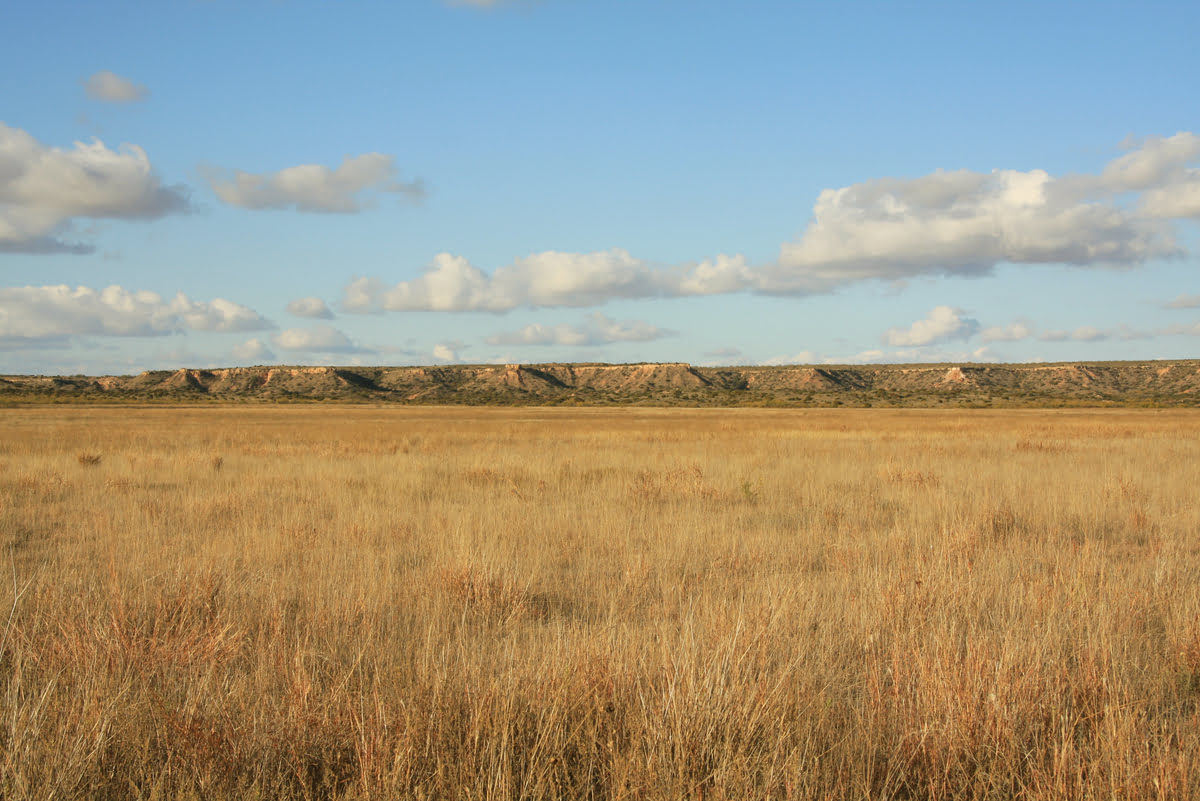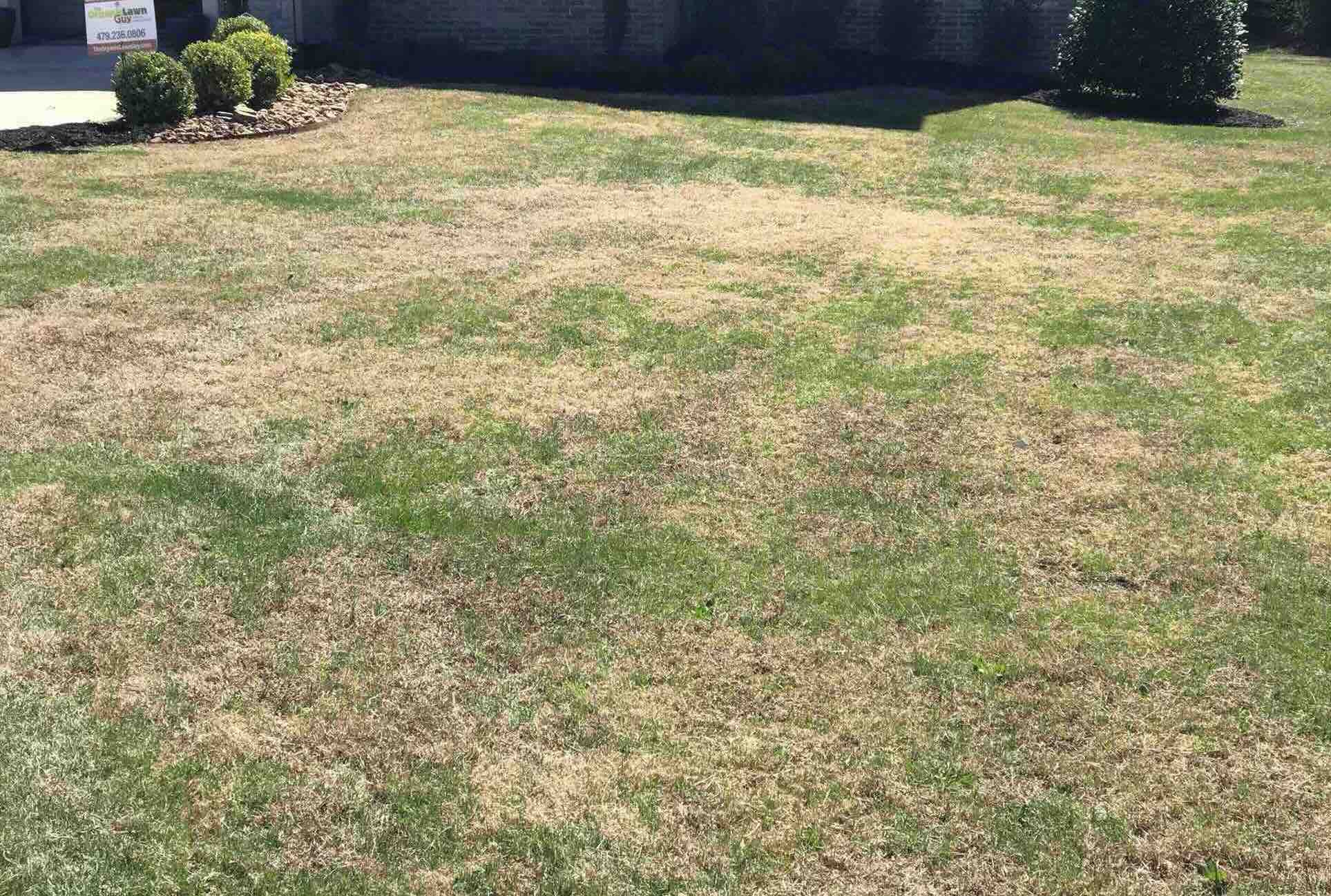Home>Gardening & Outdoor>Landscaping Ideas>What Is Short Grass Prairie


Landscaping Ideas
What Is Short Grass Prairie
Modified: February 18, 2024
Discover the beauty of short grass prairie and get inspired with landscaping ideas to bring this natural landscape into your outdoor space. Explore the unique features and benefits of short grass prairie for your landscaping projects.
(Many of the links in this article redirect to a specific reviewed product. Your purchase of these products through affiliate links helps to generate commission for Storables.com, at no extra cost. Learn more)
**
Introduction
**
Welcome to the captivating world of short grass prairies! These unique ecosystems, characterized by their resilient flora and diverse wildlife, offer a glimpse into the natural beauty and ecological significance of grasslands. As we embark on this exploration, we will uncover the defining features of short grass prairies, including their geographical distribution, climate, and the remarkable array of plant and animal species that call them home. Moreover, we will delve into the critical role of short grass prairies in the broader context of environmental conservation and the challenges they face in the modern world.
Throughout this journey, we will unravel the intricate tapestry of life within these grasslands and gain a deeper understanding of their ecological importance. So, let's venture into the heart of the short grass prairies, where the land stretches out in an expanse of vibrant greenery and teems with an abundance of life.
**
Key Takeaways:
- Short grass prairies are vast grasslands with short, tough grass and diverse wildlife. They face threats like habitat loss and invasive species, but conservation efforts are helping protect these important ecosystems.
- Short grass prairies play a big role in supporting plants, animals, and people. By creating protected areas, using sustainable land practices, and raising awareness, we can help preserve these unique landscapes for the future.
Read more: How To Keep Grass Short
Definition of Short Grass Prairie
**
Short grass prairies are expansive, open grasslands characterized by their low-lying vegetation, which typically reaches a height of less than 20 inches. These prairies are predominantly found in the central regions of North America, spanning across parts of the United States and Canada. The defining feature of short grass prairies is the prevalence of short, drought-resistant grass species that have evolved to thrive in arid and semi-arid environments.
One of the key distinctions of short grass prairies lies in their transition zones, where they merge with other grassland ecosystems, such as mixed grass prairies and tall grass prairies. This unique interplay of ecosystems contributes to the rich biodiversity and ecological dynamism of the region.
Short grass prairies are renowned for their role in supporting a myriad of wildlife, including grazing animals like bison, pronghorn, and various rodent species. The expansive vistas of these grasslands also provide vital habitats for numerous bird species, from majestic raptors to ground-dwelling birds.
These prairies have long been intertwined with the history and culture of the regions they inhabit, serving as a vital resource for indigenous communities and early settlers. The distinctive beauty and ecological significance of short grass prairies have made them a subject of fascination for scientists, conservationists, and nature enthusiasts alike.
**
Climate and Geography
**
The climate and geography of short grass prairies play a pivotal role in shaping the unique characteristics of these ecosystems. Spanning across the central regions of North America, these grasslands are often situated in areas with semi-arid to arid climates, where precipitation is limited and the landscape is marked by vast, open expanses.
Short grass prairies are typically found in regions where the annual precipitation ranges from 10 to 20 inches, creating an environment that is well-suited for the growth of drought-resistant grass species. The relatively low and sporadic rainfall in these areas has led to the evolution of plant life that can thrive in such conditions, contributing to the distinct appearance of the prairies.
Geographically, these prairies are characterized by gently rolling plains and undulating terrain, often interspersed with rocky outcrops and shallow valleys. The soil composition in short grass prairies varies, with some areas featuring sandy soils while others have a higher clay content. This diversity in soil types influences the distribution of plant species and contributes to the overall ecological richness of the grasslands.
Furthermore, the geographical expanse of short grass prairies encompasses a mosaic of interconnected ecosystems, including riparian areas, shrublands, and transitional zones that blend into other grassland types. This intricate network of habitats fosters a diverse array of flora and fauna, creating a tapestry of life within the grasslands.
The climate and geography of short grass prairies not only shape the physical landscape but also influence the ecological relationships and adaptations of the species that inhabit these grasslands. Understanding the interplay between climate, geography, and the intricate web of life within these ecosystems is essential for appreciating the resilience and ecological significance of short grass prairies.
**
Flora and Fauna
**
The flora and fauna of short grass prairies exhibit a remarkable diversity, showcasing the intricate web of life that thrives in these grassland ecosystems. The plant life in short grass prairies is characterized by a rich assemblage of grass species, including blue grama grass, buffalo grass, and western wheatgrass, among others. These grasses have adapted to the arid conditions of the prairies, often featuring deep root systems that enable them to access water from the lower soil layers during dry periods.
Beyond the grass species, short grass prairies are adorned with an array of wildflowers, such as prairie coneflower, blanket flower, and purple coneflower, which add vibrant splashes of color to the landscape. These flowering plants play a crucial role in supporting pollinators and other wildlife, contributing to the overall biodiversity of the grasslands.
When it comes to fauna, short grass prairies are home to a diverse community of animals, ranging from small mammals to iconic large herbivores. Species like pronghorn, bison, and prairie dogs are emblematic inhabitants of these grasslands, each playing a unique role in the ecosystem. The pronghorn, known for its remarkable speed and agility, is a testament to the adaptations that have evolved in response to the open terrain of the prairies. Bison, once a dominant presence in these grasslands, continue to shape the landscape through their grazing behaviors, influencing plant communities and creating habitats for other species.
Additionally, short grass prairies provide crucial nesting grounds and foraging areas for a multitude of bird species, including meadowlarks, hawks, and grassland sparrows. The expansive vistas and diverse vegetation of the prairies create a mosaic of habitats that cater to the needs of various avian species, contributing to the overall avifaunal richness of the region.
The intricate interplay between the flora and fauna of short grass prairies underscores the resilience and interconnectedness of these ecosystems. The coexistence of diverse plant and animal species within the grasslands exemplifies the adaptability and ecological harmony that define these unique landscapes.
**
Short grass prairie is a type of grassland with low-growing grasses, like buffalo grass and blue grama. It’s found in dry, windy areas and supports grazing animals like bison.
Importance and Threats
**
The significance of short grass prairies extends far beyond their breathtaking beauty, encompassing ecological, cultural, and environmental dimensions that underscore their importance on a global scale. These grasslands play a crucial role in supporting biodiversity, providing essential habitats for a myriad of plant and animal species. The resilience of the grasses and other flora in the face of arid conditions contributes to the overall stability and functionality of the prairie ecosystems.
Moreover, short grass prairies have been integral to the cultural heritage of indigenous communities and have shaped the livelihoods of ranchers and farmers who have relied on these grasslands for grazing and agricultural purposes. The historical and cultural significance of these ecosystems is deeply intertwined with the identity of the regions they inhabit, fostering a profound connection between people and the land.
Despite their ecological and cultural importance, short grass prairies face a range of threats that jeopardize their integrity and long-term sustainability. Habitat fragmentation due to agricultural expansion, urban development, and infrastructure projects has led to the loss of contiguous grassland areas, disrupting wildlife corridors and fragmenting populations of native species.
Furthermore, the encroachment of invasive plant species poses a significant challenge to the native flora of the prairies, altering the composition of plant communities and impacting the ecological balance of the grasslands. Invasive species such as cheatgrass and leafy spurge outcompete native plants, leading to a decline in biodiversity and altering the structure and function of the ecosystems.
Climate change also poses a considerable threat to short grass prairies, with shifts in precipitation patterns and increased frequency of extreme weather events impacting the resilience of these ecosystems. Droughts, heatwaves, and altered precipitation regimes can exert pressure on the flora and fauna of the prairies, potentially leading to changes in species distributions and ecosystem dynamics.
Addressing these threats and safeguarding the ecological integrity of short grass prairies requires concerted conservation efforts, collaborative land management strategies, and public awareness initiatives aimed at promoting the value of these grassland ecosystems. By recognizing the importance of preserving these landscapes, we can work towards securing a sustainable future for short grass prairies and the myriad species that depend on them.
**
Read more: What To Do If I Cut My Grass Too Short
Conservation Efforts
**
Efforts to conserve and protect short grass prairies have been instrumental in mitigating the threats facing these vital ecosystems and fostering a sustainable coexistence between human activities and the natural environment. Conservation initiatives have encompassed a range of strategies aimed at preserving the ecological integrity of the grasslands and promoting the long-term viability of native plant and animal species.
One of the key conservation approaches involves the establishment of protected areas and conservation reserves within short grass prairie regions. These designated areas serve as refuges for native wildlife and plant species, providing essential habitats and contributing to the maintenance of biodiversity within the grasslands. Through the creation of protected spaces, conservationists and land managers can mitigate the impacts of habitat loss and fragmentation, safeguarding critical ecosystems and promoting ecological resilience.
Additionally, collaborative land management practices, such as sustainable grazing strategies and prescribed burning, have been employed to maintain the health and productivity of short grass prairies. These practices aim to mimic natural processes, such as the historical grazing patterns of bison, and promote the regeneration of native grass species while controlling the spread of invasive plants. By integrating traditional ecological knowledge with modern land management techniques, conservationists seek to strike a balance between human land use and the conservation of natural ecosystems.
Education and outreach programs have also played a pivotal role in raising awareness about the value of short grass prairies and the importance of their conservation. Engaging local communities, landowners, and stakeholders in conservation efforts fosters a sense of stewardship and encourages sustainable land practices that support the preservation of grassland habitats. By fostering a deeper understanding of the ecological, cultural, and economic significance of short grass prairies, these outreach initiatives contribute to building a collective commitment to conservation.
Furthermore, scientific research and monitoring programs have provided valuable insights into the dynamics of short grass prairie ecosystems, informing conservation strategies and adaptive management approaches. By continually expanding our knowledge of these grasslands, we can refine conservation efforts, address emerging challenges, and adapt strategies to ensure the long-term vitality of short grass prairies.
Through these multifaceted conservation endeavors, dedicated individuals, organizations, and communities are working tirelessly to preserve the ecological richness and cultural heritage of short grass prairies, safeguarding these invaluable landscapes for future generations.
**
Conclusion
**
As we conclude our exploration of short grass prairies, we are left with a profound appreciation for the resilience, beauty, and ecological significance of these remarkable ecosystems. The vast expanses of low-lying grasses, the diverse array of wildlife, and the intricate web of life within these grasslands paint a portrait of interconnectedness and adaptation that captivates the imagination.
Short grass prairies, with their arid-adapted flora and iconic fauna, hold a special place in the natural tapestry of North America. Their historical and cultural significance, coupled with their vital role in supporting biodiversity and providing essential ecosystem services, underscores the importance of preserving these landscapes for future generations.
However, the challenges facing short grass prairies remind us of the urgent need for conservation efforts and sustainable land management practices. By addressing habitat fragmentation, invasive species encroachment, and the impacts of climate change, we can work towards securing the future of these grasslands and the myriad species that depend on them.
Through collaborative conservation initiatives, protected areas, and community engagement, we can strive to uphold the ecological integrity of short grass prairies while honoring the cultural heritage and historical significance of these landscapes. By fostering a deeper understanding of the value of these grasslands and promoting a shared commitment to their conservation, we can pave the way for a harmonious coexistence between human activities and the natural world.
In essence, short grass prairies beckon us to embrace a holistic approach to conservation—one that recognizes the intrinsic worth of these ecosystems and endeavors to safeguard their ecological richness for generations to come. By nurturing the interconnected web of life within these grasslands, we not only preserve a vital piece of our natural heritage but also uphold a legacy of stewardship and environmental harmony.
As we bid farewell to the sweeping vistas and teeming life of the short grass prairies, let us carry forward a commitment to protect and cherish these extraordinary landscapes, ensuring that their enduring splendor continues to inspire and enrich our world.
Frequently Asked Questions about What Is Short Grass Prairie
Was this page helpful?
At Storables.com, we guarantee accurate and reliable information. Our content, validated by Expert Board Contributors, is crafted following stringent Editorial Policies. We're committed to providing you with well-researched, expert-backed insights for all your informational needs.















0 thoughts on “What Is Short Grass Prairie”